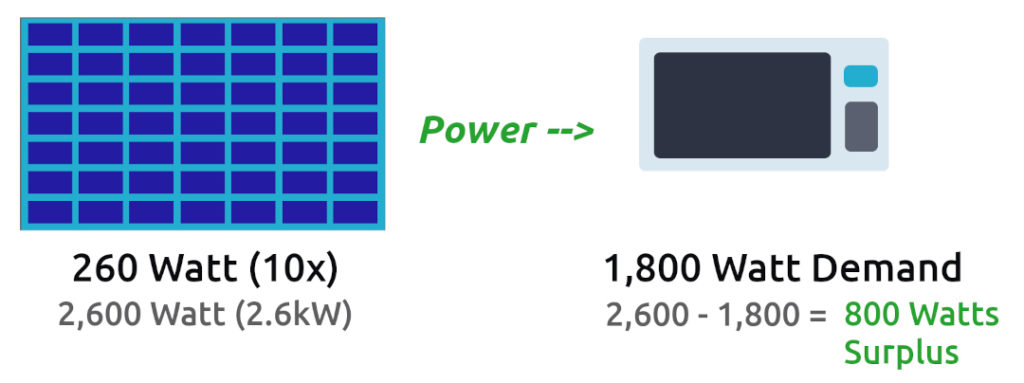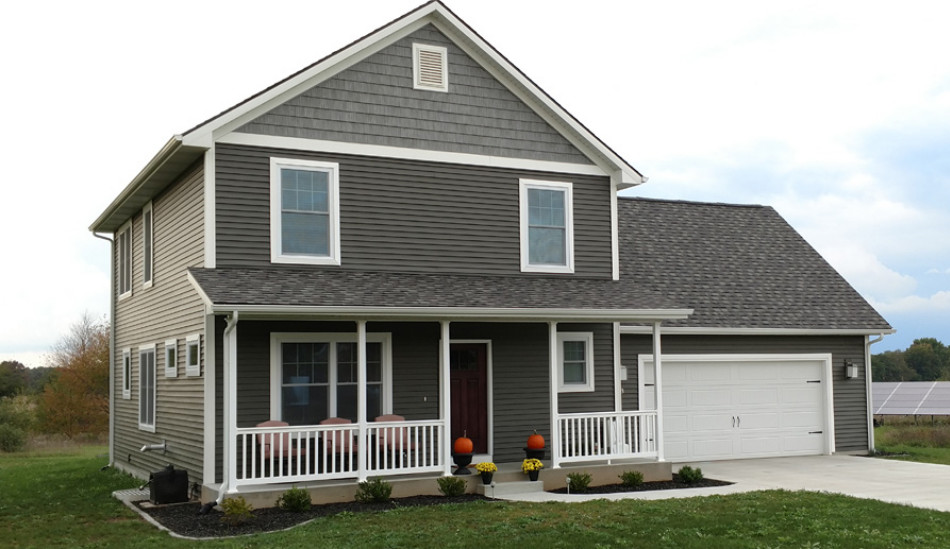It’s a novel concept, this making energy from the sun. You put some panels on your roof and completely bypass the whole fossil fuel fiasco. No more drilling, mining, spilling or polluting. And in some cases, no more monthly correspondence from your favorite utility.
Sounds too good to be true… right?
Does it really work?
Do solar panels really produce a lot of energy?
With their inherent scalability, solar panels can and do produce a lot of energy. One need only consider the Tesla Gigafactory to grasp the scale of just how much energy solar can produce.
And while it is mind-blowing to think that solar panels can provide all the energy necessary to power a facility designed to produce 500,000 vehicles a year, just how does that relate to the average home owner?
The following are three examples of panel power production and their relationship to your home.
Table of Contents
One 260 Watt Panel
Solar panels come in many different sizes. So when trying to gauge what a single panel can do, it’s important to understand just how much output a particular panel is producing. Each panel will have its own power rating and this is defined in watts.
For our off-grid home, the panels are rated at 260 watts each. This means that in optimum conditions, a single solar panel from our array will generate 260 watts of power.
So how much is that?
For practical purposes, consider house lighting. We use LED bulbs in most of our light fixtures. Their power requirements are rated at 8 watts per bulb. This means that a single panel, producing 260 watts, can power up to 32 bulbs.

To put that in perspective, this means that in our home, a single solar panel can provide enough energy to light virtually every room in the house, including bathrooms, simultaneously.
Ten 260 Watt Panels
It should be understood, however, LED bulbs are rather anemic when compared to the power requirements of say a microwave or an air-conditioner.
Our microwave, for example, is rated at 1800 watts of power consumption. Clearly, one panel limited to 260 watts of power production would not be enough to run a microwave that demands 1800.
So let’s add a few panels.
Let’s say, hypothetically, that you have an array of 10 panels, each rated for 260 watts of power production. In this scenario, we now have a potential for 2,600 watts (2.6kW) that can be used by the house.

This means that our 1800 watt microwave will run just fine, leaving 800 watts of power still available (2,600 – 1800 = 800).
Thirty 260 Watt Panels
But what if I want to run the microwave and an air-conditioner?
Our microwave, with its 1800 watt demand and a small air-conditioner with a hypothetical 1500 watt power requirement, are added together to give us a load demand of 3,300 watts (3.3kW). This exceeds the 2,600 watts (2.6kW) power capacity of ten 260 watt panels. Consequently, neither the microwave nor the air-conditioner will run properly.
Time to add more panels.
The solar array we have at our home currently consists of 30 panels. With each panel rated at 260 watts, this gives us 7,800 watts (7.8kW) of power production.

Meaning that after subtracting the 3,300 watts (3.3kW) of power consumption required by running both the microwave and the air-conditioner, we will still have 4,500 watts (4.5kW) of energy production available to power the rest of our house.
Conclusion
With solar power being scalable, it is easy to see how panels can easily power a home. However, it is crucial that one understands what their house load is before installing an array. I’ve seen/heard far too many horror stories of individuals spending a good amount of money on a home-power system without having done proper homework.
In these cases, things do not work out well.
And while I sympathize with their situation, it most be noted that the failure was on the part of planning and not on the actual panels.
The technology works! And this I can testify to personally.
Our house has been unplugged from the electric utility since Dec of 2015 (completely off-grid). We have a normal 1,800 square foot home with all of the regular amenities – dishwasher, fridge, central air, microwave, ect. And not once, have we exceeded panel capacity.
But… we did a LOT of homework before plunking down the money.
Solar panels can/do produce a lot of energy. One need only research a little to understand just how much.
Tools To Help
If you are interested in powering your home with solar, but aren’t sure how many panels you might need, please check out – How Many Solar Panels Do I Need?
